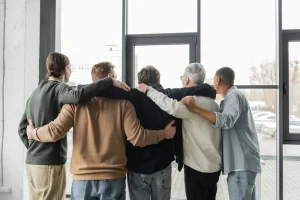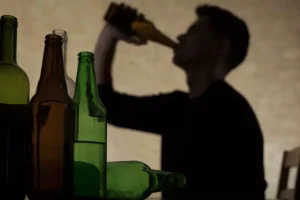
Respondents complete two computer-assisted segments, one conducted by an interviewer and a second audio-assisted portion without interviewer help, intended to provide a private environment to increase the likelihood of honest reporting of illicit drug use. If doctors think you may have overdosed on purpose or are at risk of harming yourself or others, you may see a psychiatrist or addiction specialist before you leave the hospital. For example, a common dose of alprazolam (Xanax) is 0.5 to 1.5 milligrams.
- People may opt for a benzo rehab center near their home, or they may think it’s best for them to travel out of state to immerse themselves in their recovery.
- Others described intentionally avoiding illicit opioids to reduce the risks of their benzodiazepine use, choosing other drugs (e.g. cannabis) to use alongside their benzodiazepines and OAT.
- Emergency department visits and related deaths have soared in recent years.
- However, benzodiazepines can become addictive if not taken properly, and in some cases, misuse can be more dangerous than the anxiety disorder itself.
- If the FDA thought that benzodiazepines were not safe or effective or that the risk-to-benefit ratio was unfavorable they would intervene with appropriate warnings.
Benzodiazepine Abuse Causes and Risk Factors
Although seniors aged 65 and older had the lowest abuse of benzos, individuals aged 50 and older were more likely to take benzos more frequently than prescribed, typically using it to assist with sleep difficulties. Past measures to reduce and restrict benzodiazepines were implemented in New York in 1989 in the form of triplicate prescriptions. The prescriber, pharmacy, and the state each received or retained one copy. Prescriptions were limited to a 30-day supply with no benzodiazepine withdrawal refills for most indications.53 Although successful at reducing overall benzodiazepine prescribing, these measures had many unintended consequences.
Treatment
Bristol participants reported that a range of illicit benzodiazepines were available locally, as well as diverted prescription benzodiazepines, and many sourced them online, which enabled curated co-use (or at least a perception of curated co-use). In Teesside, people reported illicit or diverted benzodiazepines were hard to find but illicit zopiclone was readily available. No participants in Teesside currently held a benzodiazepine or zopiclone prescription, whereas 17 participants amongst those recruited from Bristol and Glasgow did. Seven participants from Glasgow were prescribed the buprenorphine long acting injection but no participants from Bristol or Teesside were. Most participants recruited in Glasgow reported current co-use patterns that sit in the less controlled category (co-use throughout the day, benzodiazepine/z-drug use throughout the day plus OAT, or co-use binges). Participants were recruited from community drug treatment and harm reduction services, women’s recovery groups, homeless outreach residential crisis and stabilisation services.
Treating Benzodiazepine Abuse at Home
Benzodiazepines, sometimes called benzos, are a type of medication known as tranquilizers. These drugs slow down your central nervous system, cause sedation and muscle relaxation, and lower anxiety levels. Often used to treat anxiety or insomnia, they’re some of the most commonly prescribed medications in the U.S. But they can be addictive, especially if you take them every day or use them long-term.

Even when benzos are used for a short period of time, the drugs can causeimmediate side effects. Our findings that women, older, and non-Hispanic white respondents had higher use of benzodiazepines is consistent with previous work (1, 2, 39–41). This may further support the hypothesis that higher misuse is partially a function of limited access to a prescribed option—limited for younger patients due to lack of insurance and for men due to minimal disclosure of mental health concerns to providers (42). However, higher misuse was not found among racial and ethnic minorities, even though they have limited access to specialty mental health care and lower rates of insurance (30). Due to the potentially life-threatening nature of benzodiazepine withdrawal symptoms, a medical detox overseen by a trained professional is advised. There are inpatient treatment centers across the country that can help benzodiazepine addicts, providing safe spaces for detoxification and help with long-term recovery.
Causes and Risk Factors for Benzo Addiction
- Your healthcare provider will ask when you take benzodiazepines, and how much you take.
- Low-risk patients can be managed in general practice and may benefit most from attempting withdrawal.
- Long-term benzodiazepine use can also lead to physical dependence and addiction.
- Doing this allows medical professionals and clinical therapists to determine the severity of the addiction and find anyunderlying co-occurring disordersthat have to be treated.
Because benzos can be highly addictive, a physical dependence can happen even with a short treatment period of therapeutic doses. Although benzodiazepines help millions of people live better lives, they also have the potential to be abused. Because of their ability to relax the user, people can use them as an escape, just like any other drug. When monitored closely and used according to the guidelines of one’s drug addiction treatment prescribing physician, benzodiazepines can serve a beneficial purpose. Benzos may also be used in conjunction with other drugs, such as to help people come down from their high after using stimulants like cocaine. When taken, the drugslows down a person’s brain activity, increasing the effects of gamma-aminobutyric acid (GABA), and slowing bodily nerve impulses.

- Both drugs were similarly effective at reducing the psychological symptoms.
- The most common source of misuse for both age groups was from a friend or relative.
- Abusing benzodiazepine can lead to a tolerance forming in the user’s body, leading to psychological or physical dependence on the drug to create the same high.
- One 2024 meta-analysis of previous studies found that benzodiazepines were more effective than SSRIs at reducing the physical symptoms of anxiety.
At the interpersonal level the study findings suggest that co-use also achieves the function of increasing confidence for people who experience social anxiety. Some participants reported the availability of drugs was a trigger to co-use—for example participants reported co-using following an offer of illicit opioids, benzodiazepines or z-drugs by a friend, acquaintance or dealer—particularly if it was their preferred type. Conflict, relationship issues, abuse and trauma imparted on them or by them was also a trigger for uncontrolled patterns of co-use as a way of dealing with these challenges. At the organisational level OAT and benzodiazepine or z-drug prescribing decisions impacted on people’s patterns of co-use.

This could include buying the drug illegally, taking it in larger amounts, and taking it for an extended amount of time. An addiction likely won’t occur if a patient follows a doctor’s instructions, but some people become accustomed to the drug’s calm and high. The Recovery Village at Palmer Lake offers comprehensive addiction treatment for drug and alcohol addictions and co-occurring mental health conditions. Is a licensed and practicing pharmacist and medical writer who specializes in different substances, the effects of substance abuse, and substance use disorder. To boost the effects of benzodiazepines, some users will mix them with other central nervous system (CNS) depressants, such as alcohol. Alcohol is often the chosen substance abused in conjunction with benzos, though some will use opiates as they believe the combination heightens the high felt by both.





